ZHCSFI1 September 2016 SN75LVPE801
PRODUCTION DATA.
- 1 特性
- 2 应用
- 3 说明
- 4 修订历史记录
- 5 说明 (续)
- 6 Pin Configuration and Functions
- 7 Specifications
- 8 Parameter Measurement Information
- 9 Detailed Description
- 10Applications and Implementation
- 11Power Supply Recommendations
- 12Layout
- 13器件和文档支持
- 14机械、封装和可订购信息
7 Specifications
7.1 Absolute Maximum Ratings
over operating free-air temperature range (unless otherwise noted)(1)| MIN | MAX | UNIT | ||
|---|---|---|---|---|
| Supply voltage, VCC(2) | –0.5 | 4 | V | |
| Voltage | Differential I/O | –0.5 | 4 | V |
| Control I/O | –0.5 | VCC + 0.5 | ||
| Storage temperature, Tstg | –65 | 150 | °C | |
(1) Stresses beyond those listed under Absolute Maximum Ratings may cause permanent damage to the device. These are stress ratings only and functional operation of the device at these or any conditions beyond those indicated under Recommended Operating Conditions is not implied. Exposure to absolute-maximum-rated conditions for extended periods may affect device reliability.
(2) All voltage values, except differential voltages, are with respect to network ground pin.
7.2 ESD Ratings
| VALUE | UNIT | |||
|---|---|---|---|---|
| V(ESD) | Electrostatic discharge | Human body model (HBM), per ANSI/ESDA/JEDEC JS-001, all pins(1) | ±6000 | V |
| Charged device model (CDM), per JEDEC specification JESD22-C101, all pins(2) | ±1500 | |||
(1) JEDEC document JEP155 states that 500-V HBM allows safe manufacturing with a standard ESD control process.
(2) JEDEC document JEP157 states that 250-V CDM allows safe manufacturing with a standard ESD control process.
7.3 Recommended Operating Conditions
typical values for all parameters are at VCC = 3.3 V and TA = 25°C; all temperature limits are specified by design| MIN | TYP | MAX | UNIT | ||
|---|---|---|---|---|---|
| VCC | Supply voltage | 3 | 3.3 | 3.6 | V |
| Coupling capacitor | 75 | 100 | 200 | nF | |
| TA | Operating free-air temperature | 0 | 85 | °C | |
7.4 Thermal Information
| THERMAL METRIC(1) | SN75LVPE801 | UNIT | |
|---|---|---|---|
| DRF (WSON) | |||
| 8 PINS | |||
| RθJA | Junction-to-ambient thermal resistance | 97.8 | °C/W |
| RθJCtop | Junction-to-case (top) thermal resistance | 81.9 | °C/W |
| RθJB | Junction-to-board thermal resistance | 65.6 | °C/W |
| ψJT | Junction-to-top characterization parameter | 1.3 | °C/W |
| ψJB | Junction-to-board characterization parameter | 65.6 | °C/W |
| RθJCbot | Junction-to-case (bottom) thermal resistance | 19.1 | °C/W |
(1) For more information about traditional and new thermal metrics, see the Semiconductor and IC Package Thermal Metrics application report.
7.5 Electrical Characteristics
over recommended operating conditions (unless otherwise noted)| PARAMETER | TEST CONDITIONS | MIN | TYP | MAX | UNIT | |
|---|---|---|---|---|---|---|
| DEVICE PARAMETERS | ||||||
| ICCMax-s | Active mode supply current | EQ/DE = NC, K28.5 pattern at 8 Gbps, VID = 700 mVpp | 29 | 40 | mA | |
| ICCPS | Auto power save mode ICC | When auto low power conditions are met | 3.3 | 5.9 | mA | |
| Maximum data rate | 8 | Gbps | ||||
| OOB | ||||||
| VOOB | Input OOB threshold | F = 750 MHz | 50 | 70 | 90 | mVpp |
| DVdiffOOB | OOB differential delta | 25 | mV | |||
| DVCMOOB | OOB common-mode delta | 50 | mV | |||
| CONTROL LOGIC | ||||||
| VIH | High-level input voltage | For all control pins | 1.4 | V | ||
| VIL | Low-level input voltage | 0.5 | V | |||
| VINHYS | Input hysteresis | 115 | mV | |||
| IIH | High-level input current | VIH = VCC (DE/EQ) | 20 | μA | ||
| IIL | Low-level input current | VIL = 0V (DE/EQ) | 10 | μA | ||
| RECEIVER AC/DC | ||||||
| ZDIFFRX | Differential input impedance | 85 | 100 | 115 | Ω | |
| ZSERX | Single-ended input impedance | 40 | Ω | |||
| VCMRX | Common-mode voltage | 1.7 | V | |||
| RLDiffRX | Differential mode return loss (RL) | f = 150 MHz to 300 MHz | 20 | 26 | dB | |
| f = 300 MHz to 600 MHz | 18 | 22 | ||||
| f = 600 MHz to 1.2 GHz | 14 | 17 | ||||
| f = 1.2 GHz to 2.4 GHz | 10 | 12 | ||||
| f = 2.4 GHz to 3 GHz | 8 | 12 | ||||
| f = 3 GHz to 5 GHz | 6 | 11 | ||||
| RXDiffRLSlope | Differential mode RL slope | f = 300 MHz to 6 GHz (see Figure 6) | –13 | dB/dec | ||
| RLCMRX | Common-mode return loss | f = 150 MHz to 300 MHz | 8 | 9 | dB | |
| f = 300 MHz to 600 MHz | 14 | 17 | ||||
| f = 600 MHz to 1.2 GHz | 12 | 18 | ||||
| f = 1.2 GHz to 2.4 GHz | 8 | 10 | ||||
| f = 2.4 GHz to 3 GHz | 6 | 8 | ||||
| f = 3 GHz to 5 GHz | 6 | 8.5 | ||||
| VdiffRX | Differential input voltage PP | f = 1.5 GHz and 3 GHz | 120 | 1600 | mVpp | |
| IBRX | Impedance balance | f = 150 MHz to 300 MHz | 30 | 41 | dB | |
| f = 300 MHz to 600 MHz | 34 | 41 | ||||
| f = 600 MHz to 1.2 GHz | 24 | 33 | ||||
| f = 1.2 GHz to 2.4 GHz | 14 | 24 | ||||
| f = 2.4 GHz to 3 GHz | 12 | 26 | ||||
| f = 3 GHz to 5 GHz | 6 | 18 | ||||
| f = 5 GHz to 6.5 GHz | 5 | 18 | ||||
| TRANSMITTER AC/DC | ||||||
| ZdiffTX | Pair differential impedance | 85 | 100 | 122 | Ω | |
| ZSETX | Single-ended input impedance | 40 | Ω | |||
| VTXtrans | Sequencing transient voltage | Transient voltages on the serial data bus during power sequencing (lab load) | –1.2 | 0.3 | 1.2 | V |
| RLDiffTX | Differential mode return loss | f = 150 MHz to 300 MHz | 14 | 22 | dB | |
| f = 300 MHz to 600 MHz | 12 | 21 | ||||
| f = 600 MHz to 1.2 GHz | 11 | 18 | ||||
| f = 1.2 GHz to 2.4 GHz | 10 | 14 | ||||
| f = 2.4 GHz to 3 GHz | 10 | 14 | ||||
| f = 3 GHz to 5 GHz | 8 | 14 | ||||
| TXDiffRLSlope | Differential mode RL slope | f = 300 MHz to 3 GHz (see Figure 6) | –13 | dB/dec | ||
| RLCMTX | Common-mode return loss | f = 150 MHz to 300 MHz | 10 | 20 | dB | |
| f = 300 MHz to 600 MHz | 9 | 16 | ||||
| f = 600 MHz to 1.2 GHz | 8 | 13.5 | ||||
| f = 1.2 GHz to 2.4 GHz | 6 | 8.5 | ||||
| f = 2.4 GHz to 3 GHz | 5 | 8 | ||||
| f = 3 GHz to 5 GHz | 4 | 7 | ||||
| IBTX | Impedance balance | f = 150 MHz to 300 MHz | 34 | 38 | dB | |
| f = 300 MHz to 600 MHz | 32 | 38 | ||||
| f = 600 MHz to 1.2 GHz | 24 | 33 | ||||
| f = 1.2 GHz to 2.4 GHz | 18 | 25 | ||||
| f = 2.4 GHz to 3 GHz | 18 | 25 | ||||
| f = 3 GHz to 5 GHz | 12 | 21 | ||||
| f = 5 GHz to 6.5 GHz | 8 | 21 | ||||
| DiffVppTX | Differential output voltage swing | f = 3 GHz (under no interconnect loss) | 400 | 650 | 900 | mVpp |
| VCMAC_TX | TX AC CM voltage | At 1.5 GHz | 15 | 50 | mVpp | |
| At 3 GHz | 10 | 26 | dBmV (rms) | |||
| At 6 GHz | 12 | 30 | dBmV (rms) | |||
| VCMTX | Common-mode voltage | 1.70 | V | |||
| TRANSMITTER JITTER 3 Gbps | ||||||
| DJTX | Residual deterministic jitter | VID = 500 mVpp, UI = 333 ps, K28.5 control character, see Figure 7 | 0.12 | 0.19 | UIpp | |
| RJTX | Random jitter | VID = 500 mVpp, UI = 333 ps, K28.7 control character, see Figure 7 | 1 | 2 | ps-rms | |
| TRANSMITTER JITTER 6 Gbps | ||||||
| DJTX | Residual deterministic jitter | VID = 500 mVpp, UI = 167 ps, K28.5 control character, see Figure 7 | 0.12 | 0.34 | UIpp | |
| RJTX | Random jitter | VID = 500 mVpp, UI = 167 ps, K28.7 control character, see Figure 7 | 0.95 | 2 | ps-rms | |
| TRANSMITTER JITTER 8 Gbps | ||||||
| DJTX | Residual deterministic jitter | VID = 500 mVpp, UI = 125 ps, K28.5 control character, see Figure 7 | 4.7 | 5.76 | 8.7 | (ps) (DD) |
| RJTX | Random jitter | VID = 500 mVpp, UI = 125 ps, K28.5 control character, see Figure 7 | 0.93 | 0.94 | 0.95 | ps-rms |
| DJTX | Residual deterministic jitter | VID = 500 mVpp, UI = 125 ps, K28.7 control character, see Figure 7 | 0.8 | 1.24 | 2.7 | (ps) (DD) |
| RJTX | Random jitter | VID = 500 mVpp, UI = 125 ps, K28.7 control character, see Figure 7 | 0.9 | 0.92 | 0.93 | ps-rms |
7.6 Timing Requirements
| MIN | TYP | MAX | UNIT | |||
|---|---|---|---|---|---|---|
| DEVICE PARAMETERS | ||||||
| tPDelay | Propagation delay | Measured using K28.5 pattern (see Figure 1) | 275 | 350 | ps | |
| AutoLPENTRY | Auto low power entry time | Electrical idle at input (see Figure 3) | 11 | μs | ||
| AutoLPEXIT | Auto low power exit time | After first signal activity (see Figure 3) | 33 | 50 | ns | |
| OOB | ||||||
| tOOB1 | OOB mode enter | See Figure 2 | 1 | 5 | ns | |
| tOOB2 | OOB mode exit | See Figure 2 | 1 | 5 | ns | |
| RECEIVER AC/DC | ||||||
| t20-80RX | Rise and fall time | Rise times and fall times measured between 20% and 80% of the signal. SATA 8 Gbps speed measured 1" from device pin. | 62 | 75 | ps | |
| tskewRX | Differential skew | Difference between the single-ended mid-point of the RX+ signal rising and falling edge, and the single-ended mid-point of the RX– signal falling and rising edge. | 30 | ps | ||
| TRANSMITTER AC/DC | ||||||
| t20-80TX | Rise and fall time | Rise times and fall times measured between 20% and 80% of the signal. At 8 Gbps under no load conditions measured at the pin. | 44 | 58 | 85 | ps |
| tskewTX | Differential skew | Difference between the single-ended mid-point of the TX+ signal rising edge and falling edge, and the single-ended mid-point of the TX– signal falling edge and rising edge, D1, D0 = VCC | 2 | 15 | ps | |
| txR/Flmb | TX rise and fall imbalance | At 8 Gbps | 6% | 20% | ||
| txAmplmb | TX amplitude imbalance | 1% | 10% | |||
| TRANSMITTER JITTER | ||||||
| Rise and Fall time | 46.5% | 47.5% | 48.3% | |||
| Rise and Fall mismatch | 1.5% | 3% | ||||
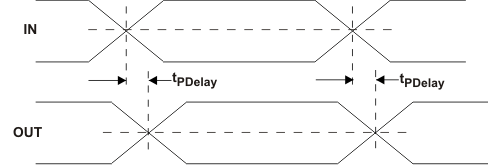 Figure 1. Propagation Delay Timing Diagram
Figure 1. Propagation Delay Timing Diagram
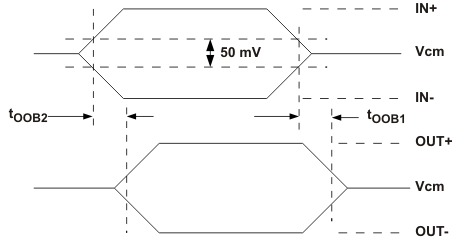 Figure 2. OOB Enter and Exit Timing
Figure 2. OOB Enter and Exit Timing
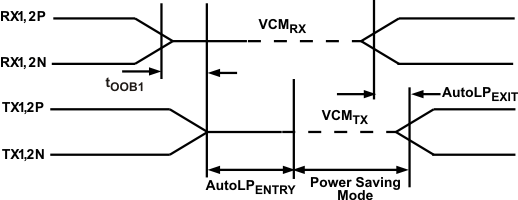 Figure 3. Auto Low Power Mode Entry and Exit Timing
Figure 3. Auto Low Power Mode Entry and Exit Timing
7.7 Typical Characteristics
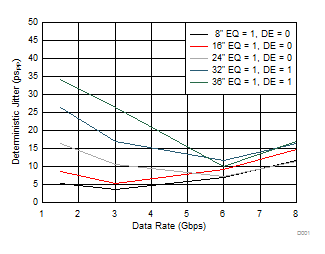
A function of input trace length of 4 mil FR-4
xx
Figure 4. Deterministic Jitter vs Data Rate
xx
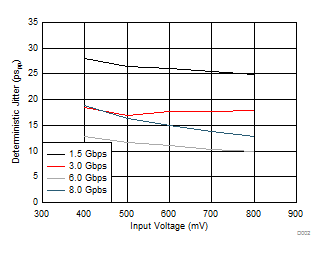
Function of data rate after equalizing for 32" of input
FR = 4 trace, EQ = 1, DE = 1
Figure 5. Deterministic Jitter vs Launch Amplitude
FR = 4 trace, EQ = 1, DE = 1